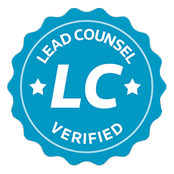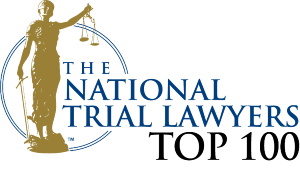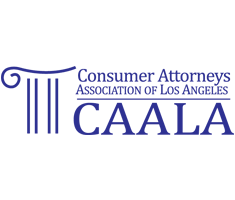Working at heights on scaffolding is an inherently dangerous job. Scaffolding accidents are some of the most serious and deadly occupational hazards in the construction industry. Unsafe working conditions greatly increase the risks of falls and other scaffolding failures that can lead to catastrophic injuries or fatalities.
Scaffolding Safety Hazards
Scaffolding allows construction workers to reach heights to perform their duties. However, scaffolds can also expose employees to a number of hazards if not erected and used properly:
Faulty Construction
Scaffolds that are poorly constructed with inadequate or defective parts can collapse suddenly and without warning. Some common scaffolding construction problems include:
- Weak or unstable platforms that cannot hold expected weight loads
- Loose or missing guardrails
- Lack of secure attachments to the building
- Damaged or faulty planking
- Improper access ladders
Lack of Fall Protection
Falls are the number one cause of scaffolding accidents. Workers are extremely vulnerable when working at heights without proper fall arrest systems in place. Guardrails provide the first critical line of defense but may not be adequate fall protection in many situations. Personal fall arrest systems like safety harnesses and lanyards should be used in conjunction with guardrails whenever possible.
Electric Shocks and Electrocutions
Scaffolding that makes contact with overhead power lines exposes workers to lethal electric shocks and electrocutions. Conductive scaffolding materials greatly increase this electrocution risk.
Collapsing Scaffolds
Sudden collapse is a constant danger with scaffolding. Scaffolds can fail when they are overloaded, struck by vehicles or equipment, or assembled incorrectly. Scaffolding collapses often result in workers falling along with heavy falling debris and materials.
Dangerous Weather Conditions
High winds, heavy rain, snow, and ice storms can all impact scaffolding structural integrity and safety. Slippery conditions significantly increase fall risks as well.
OSHA Scaffolding Safety Regulations
The Occupational Safety and Health Administration (OSHA) has extensive federal regulations for scaffolding safety under 29 CFR 1926 Subpart L. Employers must comply with all applicable OSHA scaffold standards to protect their workers from preventable injuries and deaths.
Some key OSHA scaffolding requirements include:
- Strict construction, load, and access requirements
- Mandatory guardrails, midrails, and toeboards
- Proper fall protection and fall arrest systems
- Protective measures for overhead electrical hazards
- Safe use of ladders and stairs for access
- Safe scaffold platforms, decking, and planking
- Proper maintenance, inspection, and repair
- Competent supervision and qualified personnel erecting/disassembling scaffolds
- Adequate training for all employees who work on scaffolds
In addition to federal OSHA rules, some states have their own scaffolding regulations that may be stricter or broader in scope. Employers need to review and comply with all applicable federal, state, and local scaffolding laws and standards.
Common Scaffolding Accidents and Injuries
Violations of scaffold safety rules frequently lead to catastrophic and preventable accidents. Some of the most common scaffolding hazards resulting in worker injuries and fatalities include:
Scaffold Collapses
Total collapses of faulty or overloaded scaffolding account for over 65% of scaffolding fatalities, according to OSHA estimates. Collapses often cause workers to suffer massive traumatic injuries from long falls and being struck by heavy falling objects and debris.
Falls from Height
Falls make up the majority of non-fatal scaffolding accidents. Falls frequently occur when workers lose their balance, scaffolding guardrails fail, or when improper or no fall protection is used. Falls from just 10-15 feet can easily result in broken bones, head/brain injuries, spinal cord trauma, or death.
Electrocution
Scaffolding contact with overhead power lines causes an estimated 2-5% of scaffolding fatalities annually. The massive electric current flow through the body often results in immediate cardiac arrest and internal burning injuries.
Struck By Falling Objects
Workers below scaffolding areas can suffer traumatic brain injuries or be killed when struck by heavy falling tools, equipment, construction materials, or debris. Head and neck injuries are particularly common.
Scaffolding Accident Injury Costs
The immense costs of scaffolding accidents highlight why worksite safety must be the top priority. Serious occupational injuries often incur hundreds of thousands or millions of dollars each in direct and indirect costs, according to National Council on Compensation Insurance estimates:
- Traumatic brain injuries – average $970,000 per severe injury
- Spinal cord injuries – average $980,000 for paraplegia and $1.625 million for quadriplegia
- Internal organ damage – average $795,000 per injury
- Amputated fingers/hands – average $120,000 per finger and over $450,000 per hand
- Hip fractures – average $65,000 per fracture
- Severe burns – average $700,000 per burn injury
Beyond just workers’ compensation claims, employers also face OSHA citations and fines, increased insurance premiums, lawsuits, and damages like pain and suffering or loss of consortium that are not limited by state workers’ comp caps.
Preventing Scaffolding Accidents
While working on scaffolding will always involve some inherent risks, following safe work practices dramatically reduces hazards and prevents needless injuries and deaths:
- Ensure scaffolds are designed, constructed, erected, operated, inspected, and maintained in full compliance with all OSHA and manufacturer requirements
- Do not overload scaffolding or use makeshift scaffolds
- Equip all scaffolding 10 feet or higher with adequate fall prevention – including guardrails, midrails, toeboards, and personal fall arrest systems
- Keep scaffolds away from power lines or use proper insulating materials
- Check scaffolds and work environments for slip, trip, and fall hazards and remove them prior to starting work
- Prohibit work on scaffolds during dangerous weather or high winds
- Bar unsecured tools, debris, and materials that can fall onto workers below
- Keep scaffolds free of trip hazards and debris
- Erect warning signs, barriers, and perimeter nets where needed to protect workers below scaffolds
- Provide mandatory scaffolding safety training and refresher courses to all workers
- Enforce the use of hardhats, eye protection, and other needed PPE by all employees on scaffolding
- Implement strong safety oversight, inspection, and disciplinary processes to ensure scaffolding rules are followed at all times
Consult Our Personal Injury Attorneys If Injured Due to Negligence
Construction companies are legally obligated to provide a safe work environment free of known scaffolding hazards. If you or a loved one suffered catastrophic injuries in a preventable scaffolding accident caused by unsafe conditions or OSHA violations, contact our experienced personal injury attorneys right away. We will fight to recover maximum compensation for your injuries, lost income, pain and suffering, and other damages.
Call today for a free consultation on (877) 729-2652 or (323) 782-9927.
You can also visit our offices at:
- Beverly Hills – 8383 Wilshire Blvd, Suite 830, Beverly Hills, CA 90211
- Los Angeles – 212 East Pico Blvd, Suite #4, Los Angeles, CA 90015
- Tulare – 100 E. Cross, Suite #122, Tulare, CA 93274
- Hanford – 13400 Hanford Armona Rd, Suite #B













